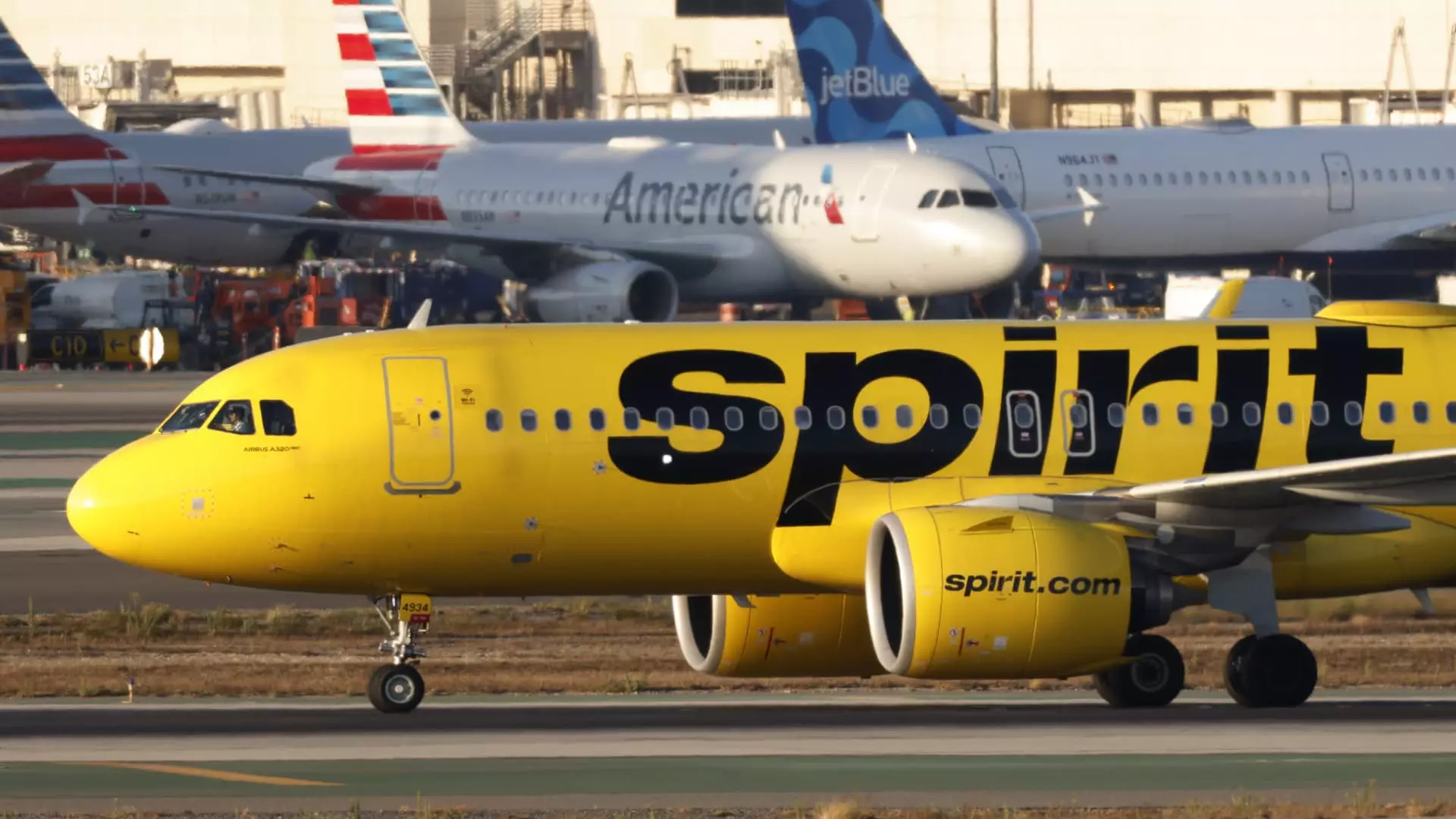Spirit Airlines, renowned for its vivid yellow planes and budget-friendly fares, is navigating an unprecedented storm. After enduring a second bankruptcy within a year, the airline’s leadership is taking drastic measures to stabilize the business. The recent announcement of a 25% capacity reduction for 2024 signals an acknowledgement that the airline’s current model is unsustainable amid mounting financial pressures. This decision is more than just a temporary fix; it encapsulates a fundamental reshuffling of its operational strategy aimed at survival. Witnessing these changes, many wonder whether Spirit can adapt quickly enough to a fiercely competitive landscape that shows no mercy for faltering players.
The airline’s struggles have been multi-faceted. High operational costs, shifting passenger preferences, and fierce competition from larger carriers threaten its relevance in the crowded aviation market. A failed acquisition attempt by JetBlue further left Spirit isolated, deepening its financial woes. Despite attempts to emerge resiliently from its March bankruptcy, Spirit finds itself contending with persistent losses and a shrinking market share. The loss of nearly a quarter of a billion dollars since its exit from Chapter 11 underscores how far the airline still is from regaining stability. It’s evident that cosmetic adjustments won’t suffice—fundamental recalibrations are needed, even at the expense of employee morale and operational continuity.
Strategic Downsizing: A Double-Edged Sword
Spirit’s plan to cut capacity by 25% reflects a strategic pivot to focus only on its most profitable routes and markets. By narrowing its network, the airline aims to slash costs significantly, especially in areas such as leasing, staffing, and maintenance. Yet, this approach carries inherent risks—particularly, the potential alienation of customers and the damage to its brand image. Flyers loyal to the budget airline’s eclectic destinations might be disappointed, and the reduced flight schedule can diminish its market appeal. Nonetheless, in a scenario where survival necessitates sacrifice, the airline’s leadership seems prepared to risk short-term customer goodwill for long-term viability.
This downsizing process is set to ripple through its workforce, as face of the crisis becomes layoffs, furloughs, and demotions. Spirit is already engaging with labor unions to discuss workforce impacts, highlighting the deep uncertainty faced by employees. The airline’s announcement of unpaid leave options and personnel reductions signifies its acknowledgment that trimming staff is unavoidable in this phase. The question is whether these layoffs will be a temporary measure to reboot the airline or a sign of a long-term contraction—either way, it demonstrates a harsh reality: resilience requires sacrifice, and not everyone will come out unscathed.
What is particularly striking is Spirit’s transparency—highlighting that these difficult decisions are made to create a more streamlined, efficient operation. This honesty, while commendable in its clarity, also exposes the painful sacrifice involved. The airline’s strategic focus on efficiency indicates it recognizes the need for a leaner operation, yet it risks losing the very core that made it distinctive: its unwavering pursuit of low-cost travel. The challenge will be balancing fiscal responsibility with customer retention and employee morale.
Market Realities and Future Outlook
Spirit’s predicament is emblematic of broader issues within the airline industry, where even nimble discount carriers must grapple with mounting costs and unpredictable demand. The post-pandemic recovery has been uneven, and the airline’s experience underscores how fragile the sector remains. While competitors like United, Frontier, and JetBlue continue to expand and innovate, Spirit is forced into retrenchment. Its decision to cut flights and consolidate capacity signals a shift from growth to preservation—a move many airlines are contemplating but few execute with such bluntness.
Yet, this strategic pivot may also serve as a turning point. In the aviation industry, crisis often breeds innovation and renewal. Spirit’s willingness to make tough choices could forge a foundation for future resilience if managed carefully. However, the path forward is fraught with peril. Its weakened financial position and the ongoing negotiations over labor terms suggest turbulence ahead. The airline’s ability to emerge from this turmoil will depend on how effectively it can redefine its value proposition, control costs, and regain customer confidence.
In such challenging circumstances, Spirit’s story is a testament to the brutal realities of the airline industry—where bold restructuring is often the only way out. While many may see it as a sign of weakness, it could also be interpreted as an act of resilience, a willingness to confront difficult truths head-on, and a recognition that sometimes, survival means making hard sacrifices. Whether Spirit will leverage this crisis into a renaissance or spiral further into instability remains to be seen, but its current course certainly underscores the brutal calculus of modern airline management.


Leave a Reply